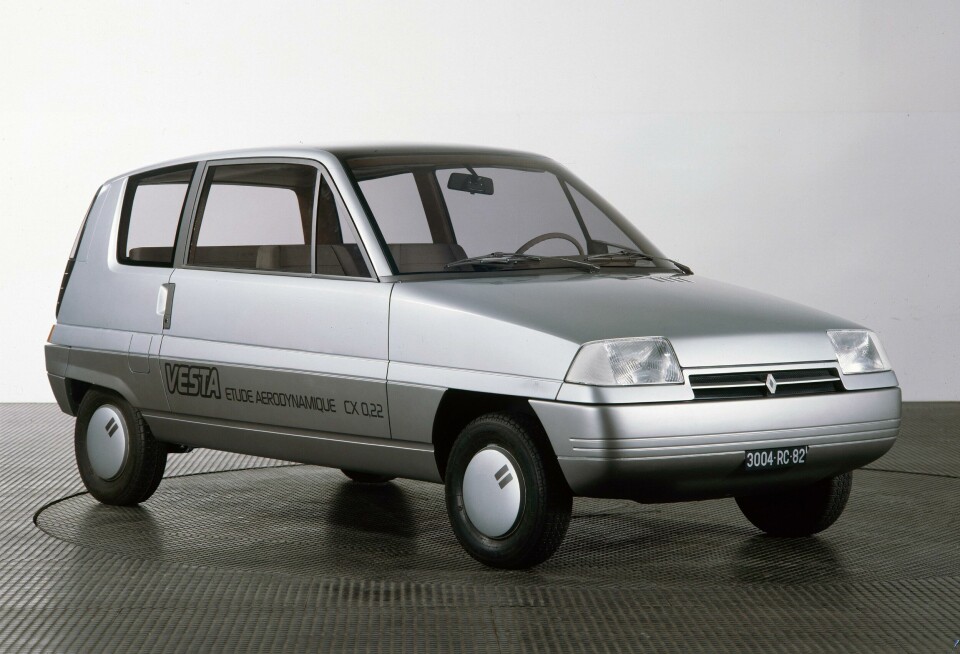
Three 1980s economy concepts by Renault, Audi and Citröen
The Renault Vesta II, Audi 60 and Citröen Eco 2000 – three concepts from the 1980s that bear revisiting
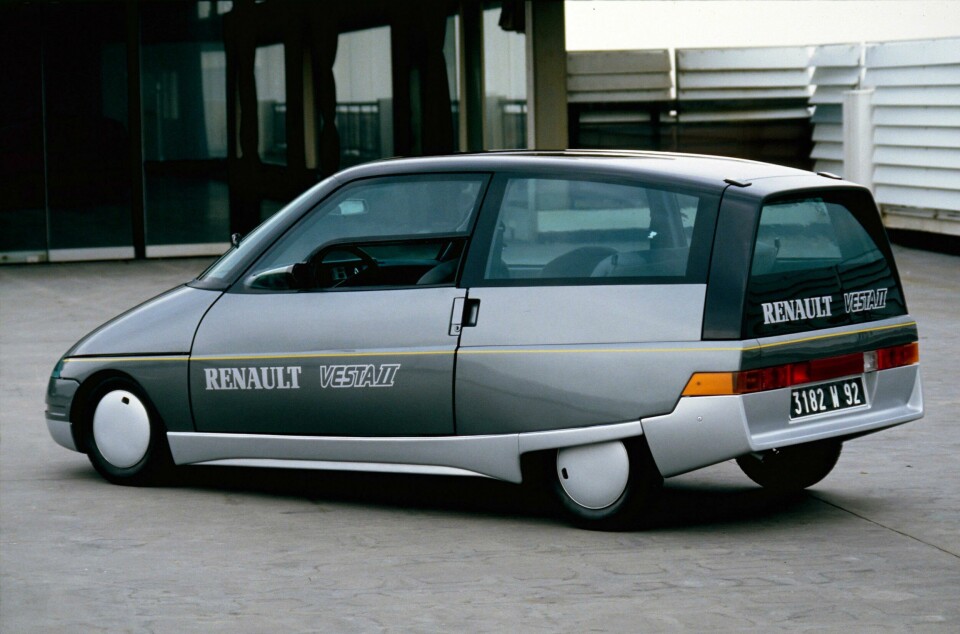
Small cars have long provided a base for economy-oriented concepts. In the early 1980s, three manufacturers developed three interesting solutions that married aerodynamic efficiency with exotic materials and bespoke powertrains to answer the economical compact car conundrum.
In 1981, Audi embarked on an investigation to reinstate a small car back into its range after the cancellation of the part-Bertone-styled Audi 50, which went on to greater success as the first-generation Volkswagen Polo. With a sharp focus on aerodynamics, the Audi 60 – development project EA 815 – was styled by Gerd Pfefferle (sources also point to the involvement of Peter Schreyer and Dave Robb). Set to be faster than a Polo with the same power thanks to its aerodynamic supremacy, a long bonnet led into a steeply-raked windscreen which flowed into a kamm-like tail. EA 815 also enjoyed a narrow cross-section and broke through the magical 0.30Cd barrier.
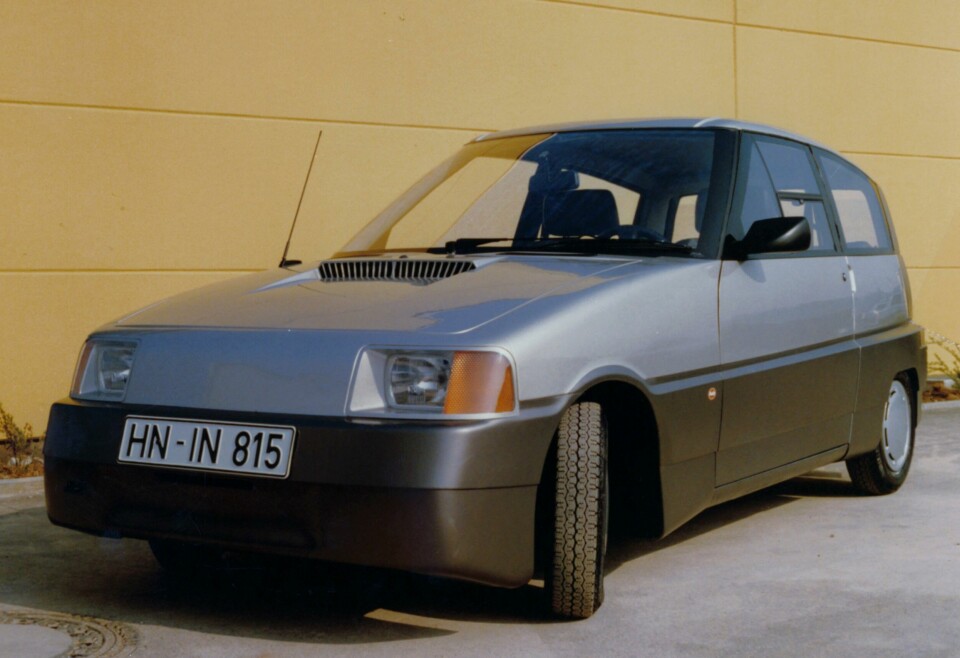
The technical development team presented the first model to the Ingolstadt board on 23rd November 1981. The first prototype broke cover nine months later. The Audi 60 previewed the 1999 A2 in terms of lightweight construction. The steel body had a point-welded sheet metal roof and the front end, while the wings and tailgate were made from plastic. The doors had aluminium skeletons and window frames, and plastic also formed the front floor.
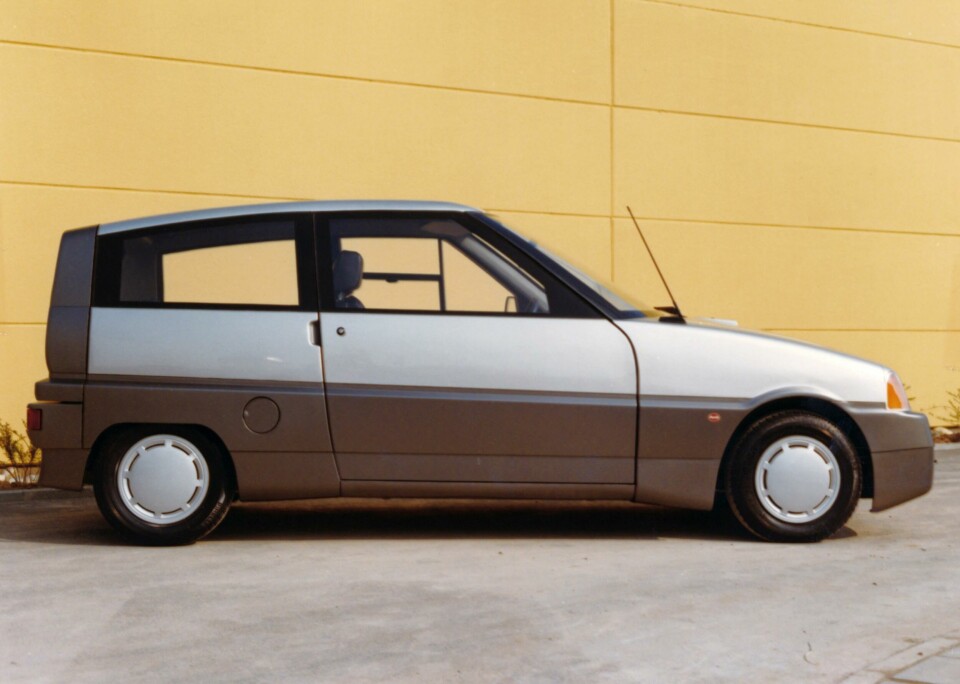
Aiming to be powered by 24 and 36 horsepower direct-injection two or three-cylinder diesel engines, supercharging was also investigated and Volkswagen’s own 1980 Polo ‘E80’ prototype and 1987 Öko-Polo (‘Eco-Polo’) were fitted with largely the same drivetrain.
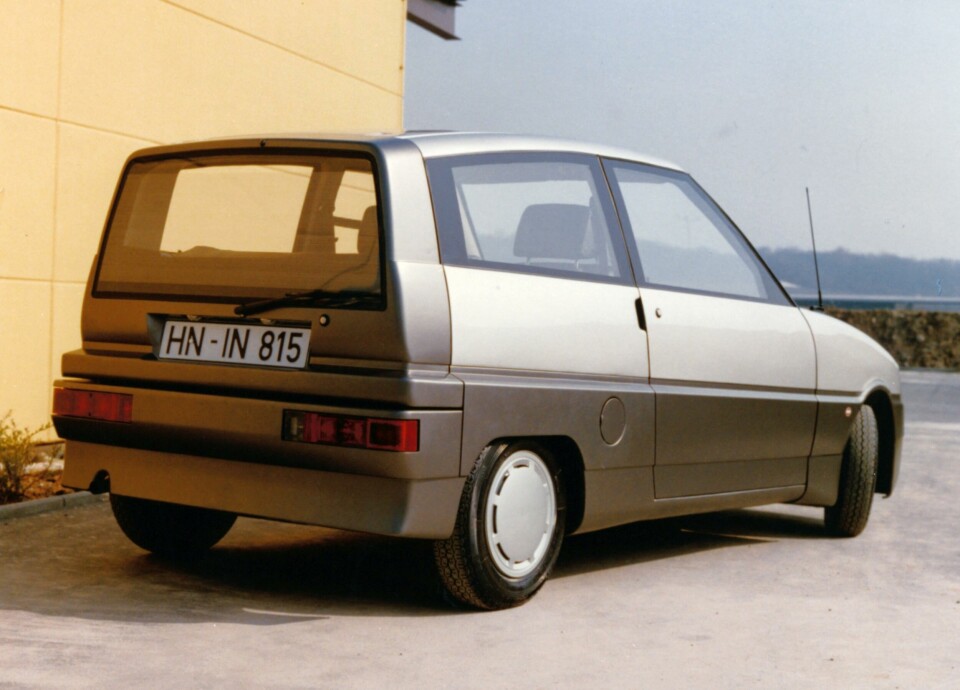
Shown at a 700-participant customer clinic, the Audi 60 polarised opinion. A projected high purchase price and limited production run helped kill the project in 1983. But, before it died, further development yielded the EA 815/02 with a Cd of 0.224. As a stepping stone between the 50 and a trailblazer for the eco poster boy A2, the 60 is a fascinating project. The 1994 Volkswagen Research CC1 also helped A2 development, its Cd of 0.20 and 440kg weight results of its carbonfibre plastic and aluminium construction.
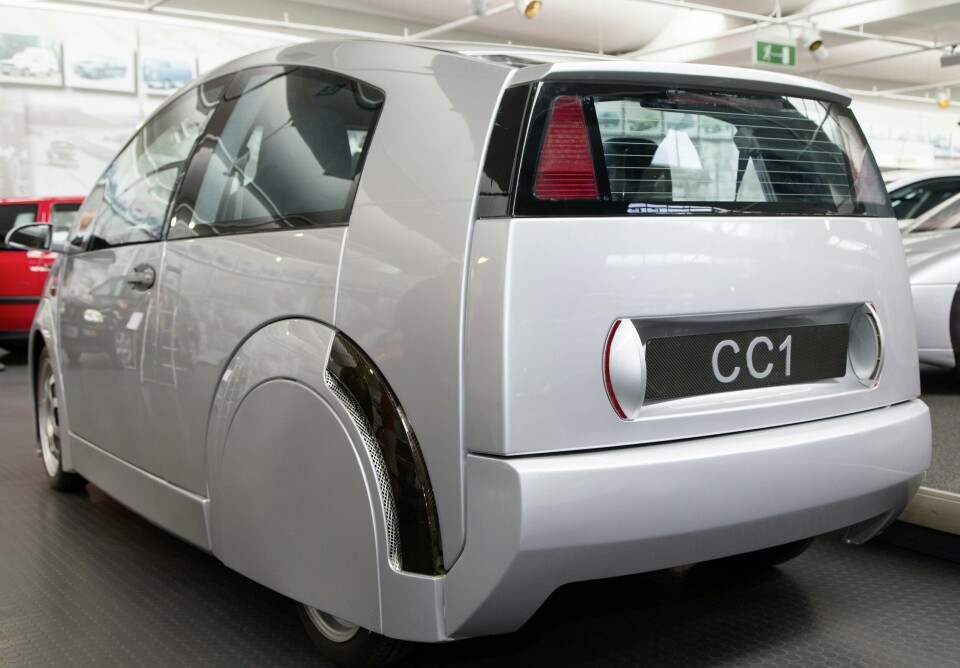
Just as Audi’s economy baby was scrapped, over in France, two new concepts were taking shape. The 1983 Renault Vesta was an aerodynamic study with the future ‘Supercinq’ R5 face and a tail which strikingly foretold the 1985 Lancia Y10. Angular with softened edges, the Vesta (‘Voiture Econome de Systemes et Technologies Avances’ or ‘Economical Vehicle of Advanced Technology and Systems’) programme was overseen by aerodynamic engineer and stylist Gaston Juchet.

Designed to answer a proposal set by the French government for a car capable of 3L/100km (94.1mpg) fuel economy, the Vesta was 254mm shorter than the R5, yet packed almost as much space. Hidden door handles and polypropylene wheel housings aided aerodynamics and weight. A glassfibre-reinforced polyurethane foam roof led into a polymethacrylate tailgate.
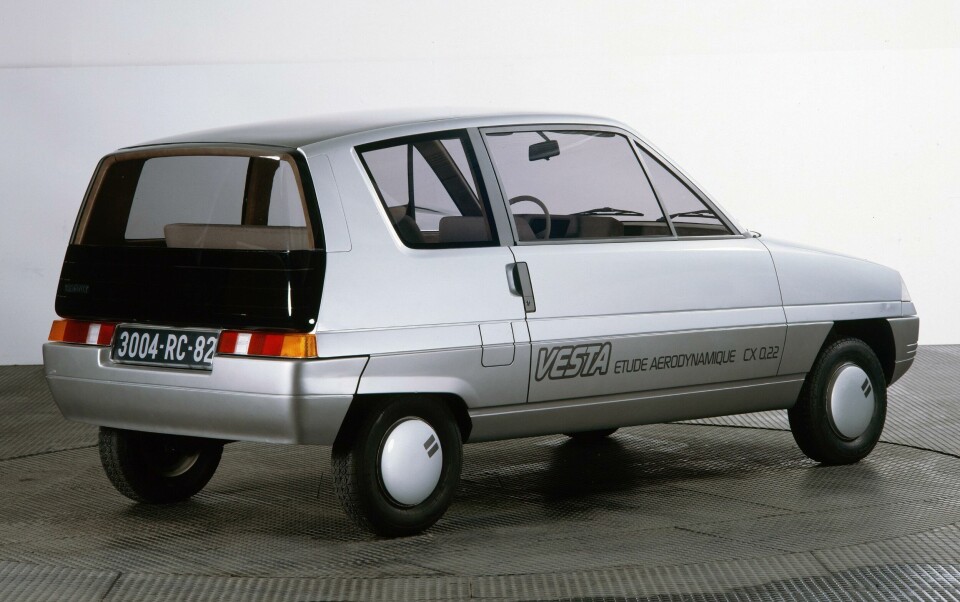
Its Cd of 0.22 was helped by a frontal area 17 percent smaller than the R5 and a windscreen slant of 57 degrees. The Vesta achieved 88.6mpg from its 716cc, 32.5 horsepower petrol engine, but in 1987, the softer Vesta II exceeded the brief, averaging 146.7mpg on a 313-mile trip from Paris to Bordeaux at a constant 63mph. More of a teardrop design, the 473kg Vesta II boasted a wind-cheating Cd of 0.186, the same as Volkswagen’s XL1 of 2013. Underbody airflow shielding, self-lowering suspension and special 2mm-thick glass allowed the Vesta II to slip through the air easier.
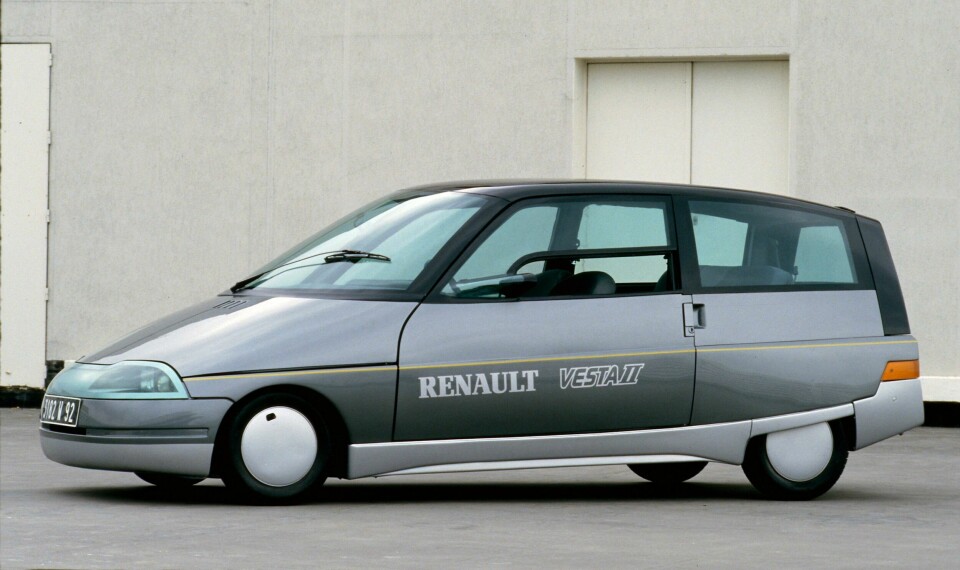
The Citröen Eco 2000 was the product of three years’ research and development from 1981 to 1984 and married elements of the Audi and Renault concepts. The final SL10 evolution has a Vesta II-like look with a Cd of 0.21. The two also share an almost monospace appearance, but the Citroën has unusual details such as the inner window line which leads to the stacked rear lights.
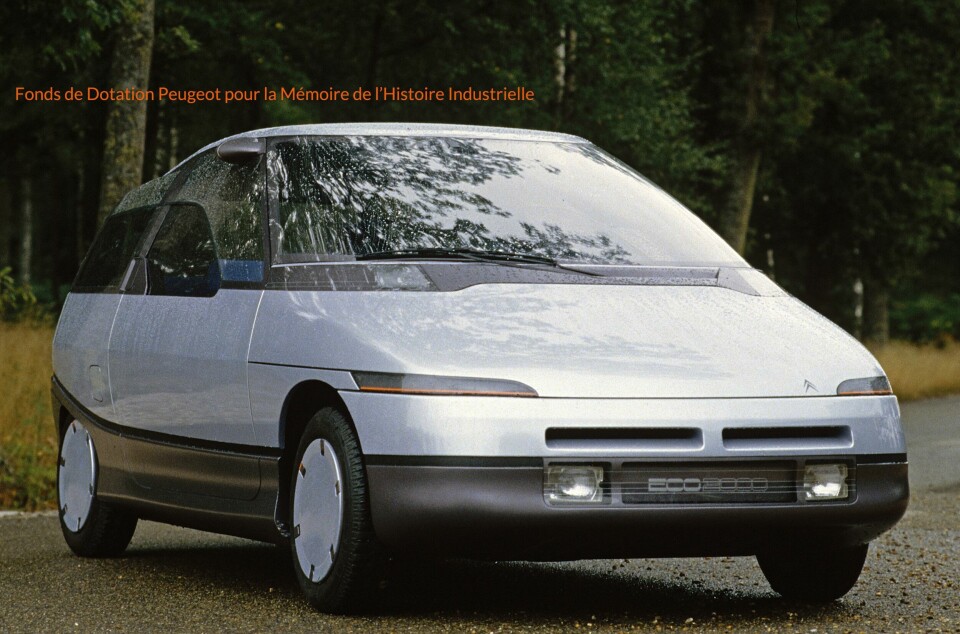
Like the Renaults, a three-cylinder petrol engine featured along with electronically-controlled suspension which lowered the Eco 2000 at speed. Fuel economy of 80.7mpg just missed the government target, but the Citroën was as equally avantgarde as its French and German eco rivals. The bonnet, doors, wings and tailgate were fashioned from synthetic materials, heralding a weight of 480kg.
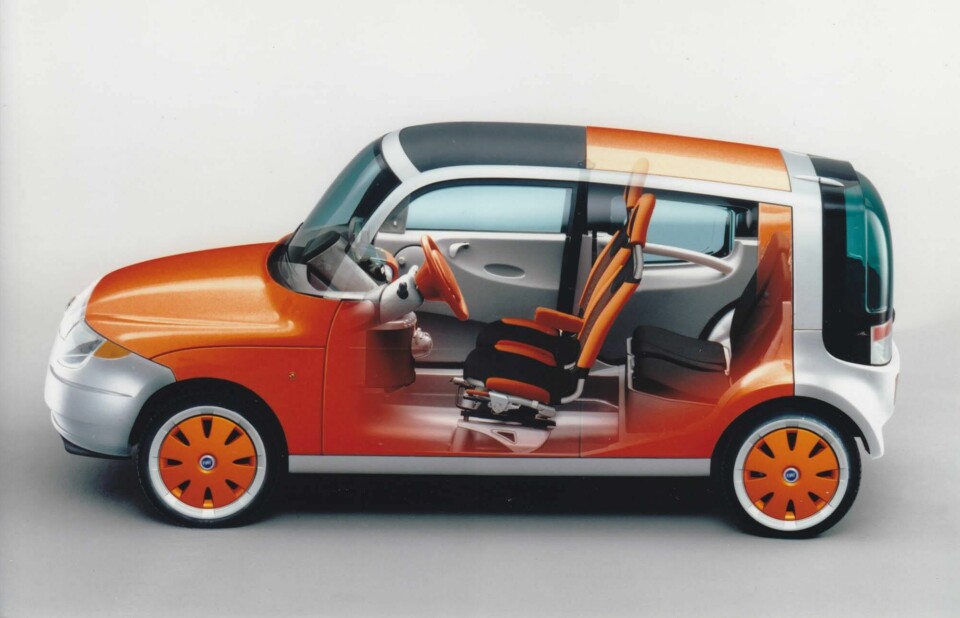
In retrospect, the Citroën and later Renault concepts appear top-heavy and the Citröen’s bulbous glazed front roof brings to mind Fiat’s Ecobasic of 1999. The geometric Audi and original Renault Vesta contrast with the softer Vesta II and Citröen, too, as the latter pair (along with the Opel Junior of 1983) previewed rounder forms that arrived at the decade’s end.
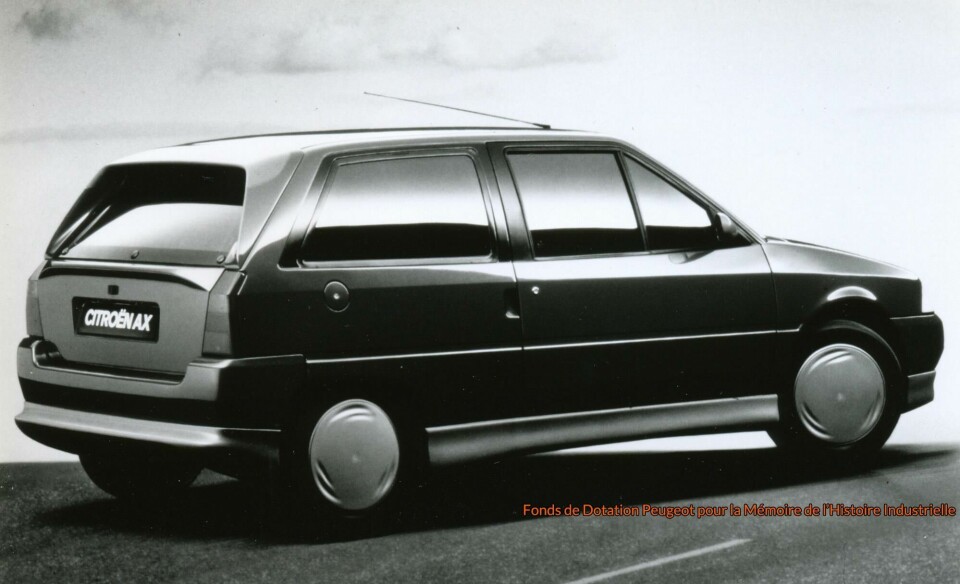
As for production cars, the Eco 2000 influenced the AX of 1986 (most noticeably the 100mpg economy research version with its wraparound rear spoiler and deep side skirts), while its vertical rear lights and smooth tailgate are hinted at on the original Fiat Punto. The Audi’s squareback aesthetic was gently employed by the second-generation Volkswagen Polo, but with a Cd of 0.31, flush glass and a tapering roof, the Lancia Y10 had an aerodynamic edge and echoes Renault’s first idea.
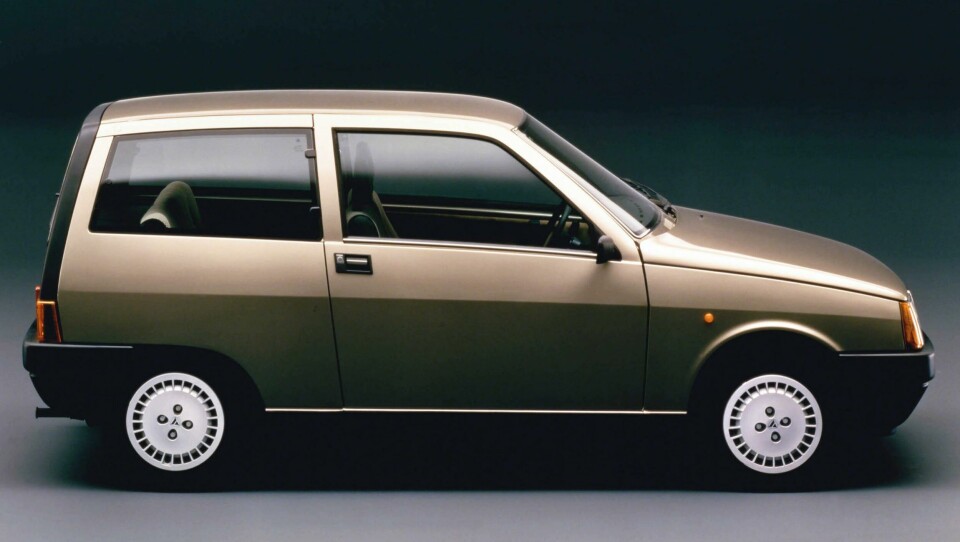
A proven advance in aerodynamics, the kamm tail helps minimise drag, so it’s little surprise that these three early 1980s concepts share a similar silhouette, as they all chase the same goal. As my design lecturer declared years ago, ‘nothing is original’. Perhaps she was right.



